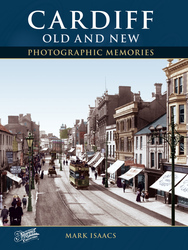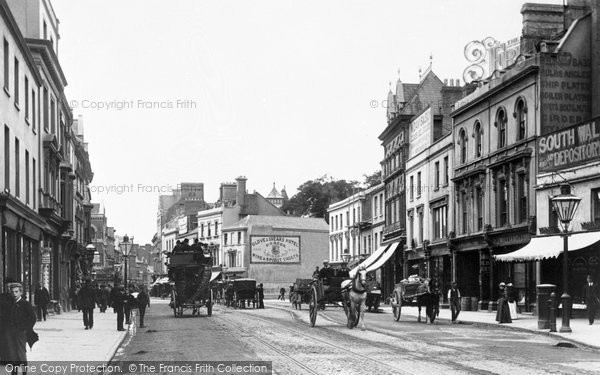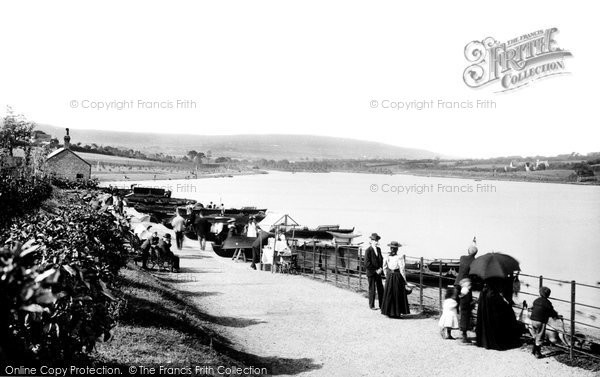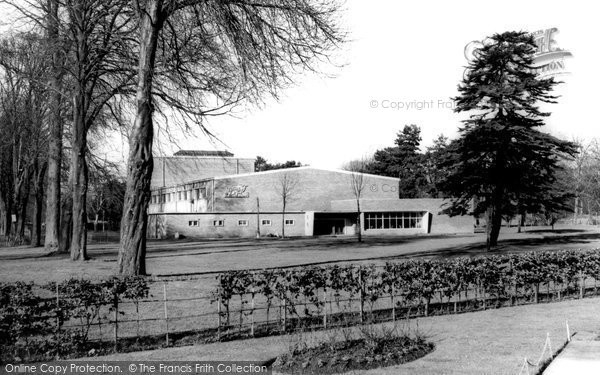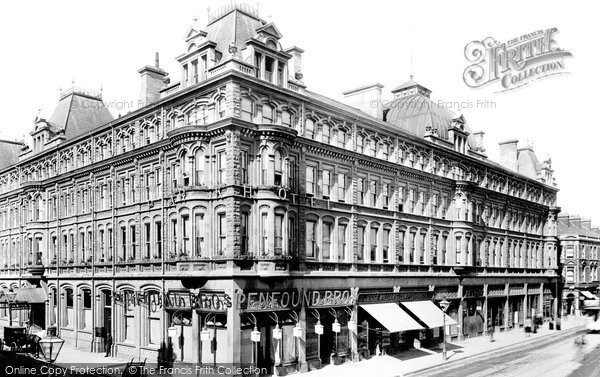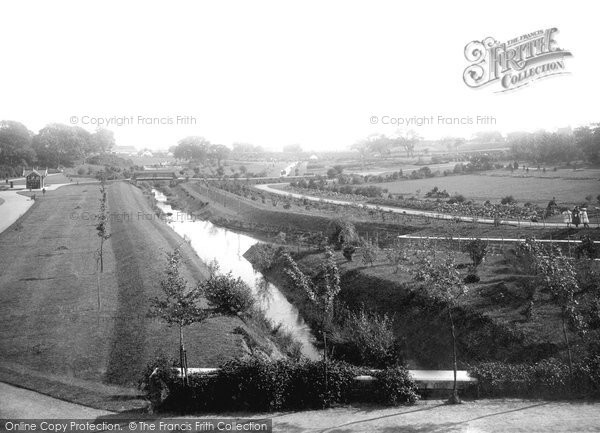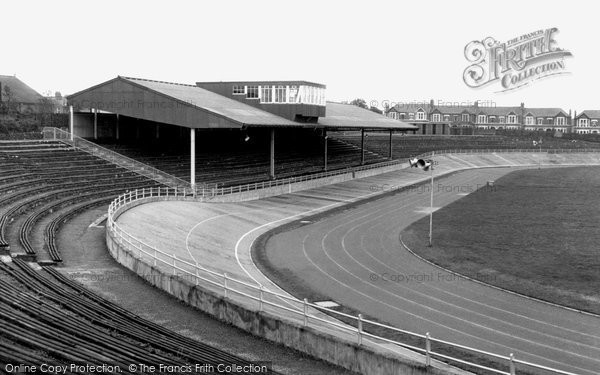Cardiff History
The history of Cardiff and specially selected photographs
The year 2005 marked the verge of two extremely significant anniversaries for the City of Cardiff. Here, perhaps, the use of the old cliché ‘a once in a lifetime experience’ is legitimate. In that year it was 100 years since the granting of city status and 50 since that city was officially recognised as the ‘Capital of Wales’ - the cultural and administrative centre of the Nation.
‘The History of Cardiff ‘ - now that’s quite a tricky subject. The story of transition from Roman encampment to 21st century city is a long and fascinating one. Some academics claim that there is no definitive history of anything but rather a tapestry of interconnecting viewpoints. For some, history is the life of the common man buffeted and shaped by market forces; for others, men of destiny guided by fate. But what of Cardiff? For a city so relatively small and compact, its story is broad and complex enough to encompass the ancient, the not so ancient and the thoroughly modern. The tale of its development has been pushed and cemented together like the outer walls of Cardiff Castle; each century builds its own layer upon the last. When we examine that facade with its varying stones we witness the striations of history. The city with which we are familiar is so inextricably linked with the Marquesses of Bute and their wealth that an historical time chart of the city could be rightly divided into ‘BB’ and ‘AB’ sections - ‘Before Bute’ and ‘After Bute ‘ respectively. If it is true that history is written by the victorious then it is certain that the Bute family name still courses through the city streets.
The earliest photographs of Cardiff in The Francis Frith Collection date from the closing decades of the 19th century. They depict the town in its Victorian pomp; the third Marquess at the height of his influence. I hope that the images and their captions convey something of the grandeur and dynamism of those pivotal years - the modern city in embryo. They must also beg the question of how the industrial age town came into being - what of Cardiff ‘Before Bute’? The incredible progress of the town during the Victorian era can often overshadow its early history. To set the scene for our photographic journey it would be amiss if we were not to recall the ancient foundations of the 19th and 20th century ‘Coalopolis’.
In the most basic terms the history of Cardiff can be understood as a repetitive cycle of growth, stability, decline and eventual renewal. The earliest period of growth dates back to the Roman Invasion of Britain. What we now know as Cardiff was then a fishing village and had been so since ancient times. The Roman settlers were to erect a fort on the site of today’s castle sometime between AD50 and 75. It is quite possible, though not conclusively proven, that ‘Cardiff’ is derived from ‘Caer Didi’ - ‘Fort of (Roman General) Didius’. Along with the empire the fortunes of the stronghold waxed and waned until the fort was eventually abandoned at the end of the 4th century heralding a period of stagnation for the ‘town’. The Norman Conquest led Robert Fitzhamon, a kinsman of William the Conqueror, into South Wales. In around 1090 he established a wooden castle inside the walls of the old Roman fort from which to exert his power. A more substantial stone construction soon replaced the wooden and by the 13th century a protective stone wall had been built around the perimeter of the emerging town which was by now under the control of the De Clare family. During the Middle Ages a population of nearly 2,000 clustered around the castle enjoying the relative peace and prosperity. Local crafts thrived and the town hosted popular markets and fairs. Most significantly, cargo ships made increasing use of the town quay. In 1404 (the same year as the sitting of his first Welsh Parliament), Owain Glyndwr attacked the ‘English’ town burning much of it to the ground. A subsequent period of renewal saw to its reconstruction.
During the next two centuries Cardiff was to remain a small, relatively insignificant provincial town. The English influence in the region, already dominant, was to be reinforced by the Act of Union in 1536 but concurrent relaxation of punitive restrictions enabled the Welsh themselves to migrate to the town to live and ply their trades. The Second Act of Union allowed the creation of the Shire of Glamorgan with Cardiff as its county town. Cardiff’s favourable geographical position allowed the port to handle increasing amounts of import and export trade including small quantities of iron and coal. A certain notoriety began to attach itself too - the port gaining a reputation for criminal activity with piracy at its core. The Herbert family began to gain prominence in the town and their sponsorship of building work included major restoration of the castle. The tumultuous years of the English Civil War saw the majority of the town backing the Royalist cause but as the tide turned in favour of the Parliamentary forces local support for the King was to waiver. In 1645 Charles I himself visited Cardiff in a vain attempt to raise finance but the town was soon to fall into Parliamentary hands. The last major battle in Wales took place at St Fagans in 1648 with Cromwell’s men triumphant.
The days of conflict passed, the town was once more to slide into a period of deep stagnation. Its infrastructure decaying through neglect, Cardiff appeared to be in a state of regression. In 1801 the population was a mere 1,870 - actually less than that of the medieval town. To quantify this inertia one only has to see Swansea with a population of 6,000 at this time with Merthyr boasting an impressive 7,700. As a port Cardiff ranked only alongside Aberthaw and Chepstow. The town was arguably at its lowest ebb but it had one great asset not fully exploited - its prime channel coast location. The dark before the dawn? Quite possibly. The closing decades of the 18th century were to usher in such dramatic innovation and development that the fortunes of this backwater town would revive and flourish in such tremendous fashion that for a period it would become one of the most talked about and significant industrial towns in the world. The sea change affected by the nascent Industrial Revolution and the arrival in South Wales of John, Lord Mountstuart in 1776 pushes our chronology into the ‘After Bute’ era. Here our story of the town’s historical steppingstones draws to a close as our photographs of the ‘modern metropolis’ take over. Suffice it to say that by 1794 the vital canal link between Merthyr and Cardiff was complete facilitating the swift transportation of the precious coal cargo to the coast for export. With the first of the town’s iconic docks opened in 1838 it is quite staggering to realise that by 1901 Cardiff’s population had risen almost a hundredfold in just 100 years.
Once again we pose the question ‘What of Cardiff?’ but now, nearing conclusion, we consider, albeit briefly, the ambience and identity of the city today. These are indeed heady times. During the latter years of the last century and the early years of this, the city has enjoyed a sustained period of prosperity and renewal not experienced for 100 years. There are certainly parallels between now and the epoch-making Victorian Cardiff in all its brash glory. Once more the city is a mecca for migration and settlement. Today though it welcomes incomers in pursuit of its first class leisure, recreational and leisure facilities in both the ‘old town’ and in the remarkable vision of the reclaimed waterfront with which it is so rightly reunited. Cardiff is now considered one of THE places to live in the United Kingdom with its quality of life/work ratio so consistently high. It’s worth remembering that only 25 years ago this proposition would have been sadly implausible.
It is often remarked that Cardiff is a city of contradictions. This judgement may appear negative but this benign schizophrenia has facilitated the cultural diversity that we now enjoy. Like most major British ports the city has attracted, absorbed and nurtured incomers of all nationalities in an urban amalgamation of cultures, attitudes and religious beliefs. With historically little tension and conflict the reasons for our enduringly harmonious interrelationship would take social historians a lifetime to analyse.
Are we an English-leaning city in Wales built with Scottish money with a famously international population? Detractors argue that Cardiff is the most anglicised conurbation in Wales finding it ironic, or worse still incomprehensible, that the city is the Capital. This hostility isn’t new. In the 19th century certain English Liberals dismissed Cardiff as (the politically right-leaning) Bute’s ‘Scottish Colony’. In 1955 the tremors of anger and resentment emanating from Swansea could almost be felt inside the walls of City Hall as their anticipated failure to become Welsh capitalwas finally made official. Again Cardiff’s ‘Welshness’ was called into question. The city was mocked as the ‘CAPITAL of Wales’ - big business and greed overtly influencing its selection.
Cardiff as ‘unrepresentative’ of Wales? One wonders how representative London is of the rest of England. National identity is certainly an issue. The concept of ‘Welshness’ rests uneasily on the shoulders of some Cardiffians. On occasion overheard conversations may cause the unwary to think that the rest of South Wales is regarded as a foreign country! This is a deep-rooted civic pride not ignorance. Language is no doubt an issue with an uneasiness felt by some solely English speakers in regard to their inability to converse in their ‘native tongue’. Make no mistake though, the true Cardiffian, regardless of background, is also a fiercely patriotic Welshman. A passion for their city can sometimes appear to push ‘nationality’ into second place. Their ‘Welshness’ (the definition of which I gladly leave to the individual) may be felt and expressed in seemingly different ways to that of their fellow countrymen but it is none the less real. Witness any international sporting event in the city for proof.
So there it is. My aim has been to briefly give the reader a flavour of the city and to share some impressions of its past and its people. If I have been able to communicate the slightest nuance of feeling that Cardiffians have for their home - a city they regard as unique - then I have been successful. With your appetite hopefully whetted please now waste no time before diving into the fabulous photographs!
Further Reading
To discover the histories of other local UK places, visit our Frith History homepage.
Cardiff History in Photos
More Cardiff PhotosMore Cardiff history
What you are reading here about Cardiff are excerpts from our book Cardiff Old and New Photographic Memories by Mark Isaacs, just one of our Photographic Memories books.
